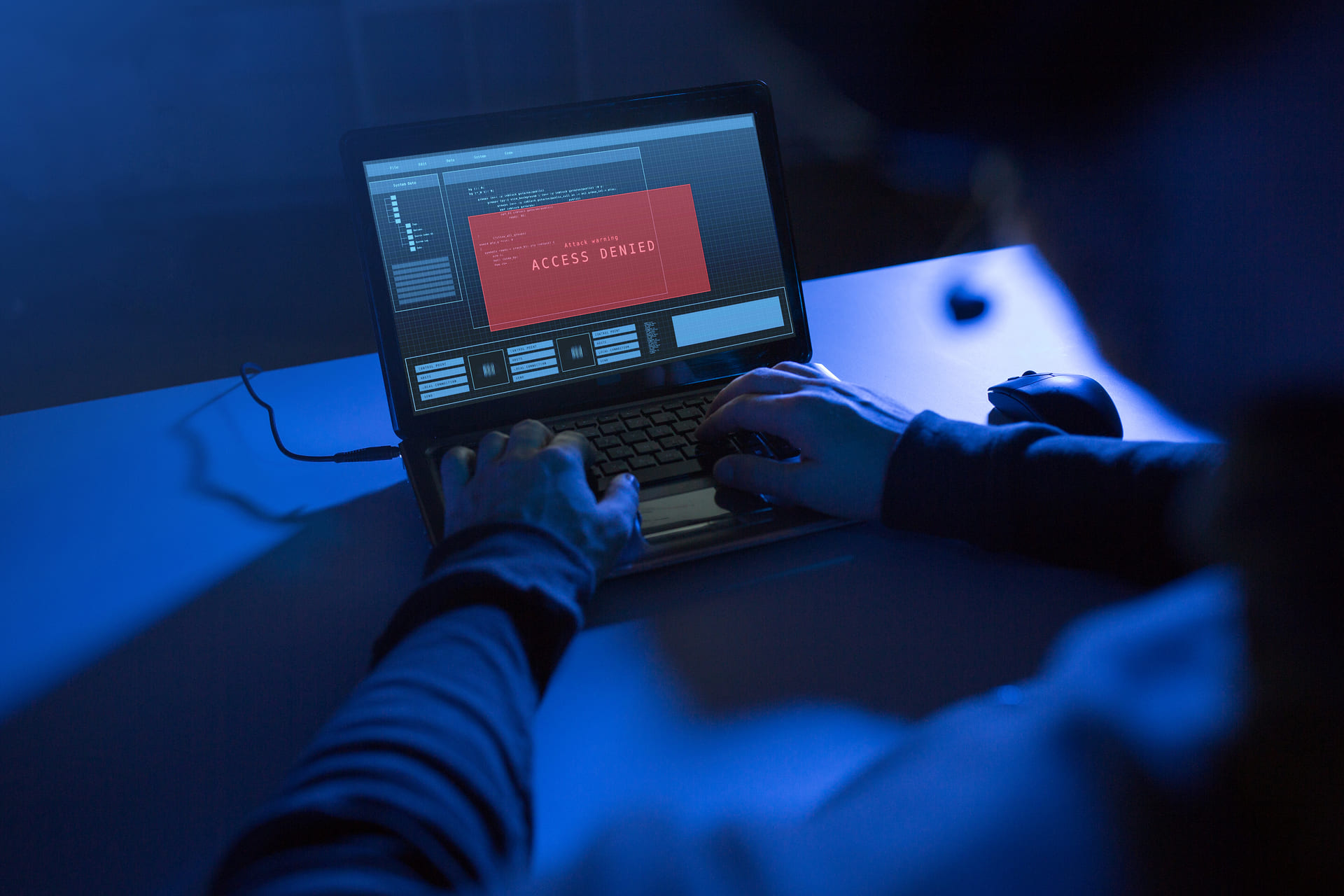A brute force attack is a cybersecurity threat where hackers use automated tools to systematically guess passwords and usernames until they find the right combination to access your business systems. These attacks target the weakest link in most small business security: password protection.
For small and medium businesses, brute force attacks represent a growing threat that can devastate operations within hours. When cybercriminals gain access to your systems, they can steal customer data, disrupt business operations, and damage your reputation permanently. The financial impact often exceeds what most businesses can afford to lose.
At CMIT Solutions, our network of 900+ IT experts has spent over 27 years protecting businesses from these evolving cyber threats. We understand that small businesses need enterprise-level security without the enterprise-level complexity.
Our cybersecurity services provide comprehensive protection against brute force attacks, ensuring your business stays secure and operational.
How Brute Force Attacks Work Against Your Business
Brute force attacks operate like a digital locksmith with unlimited time and patience. Cybercriminals deploy automated software that systematically tries thousands of password combinations per second against your business accounts.
With CMIT Solutions’ 25+ years of cybersecurity experience, we’ve witnessed how these attacks have evolved from simple manual attempts to sophisticated automated operations.
💡 Consider this scenario: A small accounting firm in downtown Chicago uses “Password123” for its main server access. An attacker’s automated tool tries common passwords first, cracking this weak credential in under 10 minutes. Once inside, the hacker accesses client tax returns, bank records, and financial documents for 200+ clients.
These attacks commonly target remote desktop protocol (RDP) connections, VPN logins, and email accounts because they provide direct pathways into your business network. Once attackers gain initial access, they can move laterally through your systems, accessing additional accounts and sensitive information.
The cascading effects on business operations are immediate and severe. System lockdowns, data encryption by ransomware, and corrupted files can shut down operations for days or weeks. Many businesses never fully recover from the operational and reputational damage.
📌 Understanding what is cyber security helps business owners recognize these threats early.
Common Types of Brute Force Attacks Targeting Small Businesses
Small businesses face several distinct types of brute force attacks, each designed to exploit different vulnerabilities in typical SMB security setups:
- Simple Brute Force Attacks: systematically try every possible password combination, starting with common patterns like “123456” or “password.” These attacks are slow but effective against weak passwords.
- Dictionary Attacks: use lists of commonly used passwords and phrases to speed up the cracking process. Attackers often customize these dictionaries with industry-specific terms and local information.
- Credential Stuffing: exploits the dangerous habit of password reuse across multiple accounts. When attackers obtain credentials from one breach, they test them across hundreds of different sites and systems.
- Reverse Brute Force Attacks: test common passwords against many usernames. This method is effective when many accounts share weak or reused passwords and can quickly compromise large numbers of accounts.
- Hybrid Attacks: combine dictionary words with number and symbol variations, making them highly effective against passwords like “CompanyName2024!” or “Summer2024#.”
| Attack Type | Primary Target | Business Risk Level |
| Simple Brute Force | Weak passwords | High |
| Dictionary Attack | Common passwords | Very High |
| Credential Stuffing | Reused passwords | Critical |
| Reverse Brute Force | Accounts with common passwords | Very High |
| Hybrid Attack | Modified common passwords | Very High |
Popular Tools Hackers Use for Brute Force Attacks
⚠️ Federal cybersecurity agencies regularly issue warnings about these automated tools that make brute force attacks accessible to cybercriminals with minimal technical skills:
- Hydra can attack over 50 different network protocols simultaneously, making it particularly dangerous for businesses with multiple access points. This tool can test thousands of password combinations per minute across different services.
- John the Ripper specializes in cracking password hashes and works across different operating systems. Attackers often use this tool after gaining initial access to crack additional stored passwords.
- Aircrack-ng targets wireless networks specifically, making it a threat to businesses relying on Wi-Fi for operations. Small businesses with weak wireless security become easy targets for this suite of tools.
- Hashcat is a GPU-accelerated password cracking tool that uses graphics cards to test large numbers of password guesses far faster than CPU-based methods.
Small and medium businesses are particularly vulnerable to these automated tools because they often lack the advanced monitoring and detection systems that enterprise companies deploy. Without proper protection, these tools can operate undetected for hours or days.
Warning Signs Your Business May Be Under Attack
Recognizing these early warning signs can save your business from a successful brute force attack:
- Multiple Failed Login Attempts appearing in your system logs, especially during off-hours, often indicate automated password guessing. Many small businesses don’t regularly review these logs, missing critical early warnings.
- Unusual Network Traffic Patterns include unexpected spikes in login attempts or data transfers during non-business hours. Small businesses should monitor network activity even when offices are closed.
- Slow System Performance can result from attackers running resource-intensive cracking tools against your systems. Users may notice applications running slower than normal or frequent system freezes.
- Unexpected Account Lockouts happen when brute force tools trigger your password attempt limits. If multiple employees report sudden account lockouts, an investigation is warranted immediately.
💡 Hypothetical example: A restaurant owner in Seattle noticed their point-of-sale system running unusually slow during the dinner rush. Investigation revealed attackers were running brute force attempts against the POS system’s admin account, consuming processing power and threatening to crash the system during peak business hours.
Ready to strengthen your business security? Contact us today to schedule a cybersecurity assessment and protect your systems from evolving threats.
Real Business Impact: What Happens When Attackers Succeed
When brute force attacks succeed, the immediate consequences extend far beyond simple unauthorized access. Attackers gain the ability to impersonate legitimate users, access confidential customer data, and move freely throughout your business network.
Data theft and customer information exposure create immediate legal and financial liabilities. Federal regulations require businesses to notify customers promptly about data breaches, creating additional compliance burdens and potential regulatory penalties.
Business disruption and downtime costs accumulate rapidly once systems are compromised. Every minute your systems remain offline, your business loses productivity, sales, and customer confidence.
✔️ Every minute your systems are down, your business loses money. Use our IT Downtime Calculator to see exactly how much a brute force attack could cost your company in lost productivity and revenue.
Long-term reputation damage often proves more costly than immediate financial losses. Customers lose trust in businesses that can’t protect their personal information, leading to customer defection and difficulty acquiring new clients.
Recovery from reputation damage can take years and significant marketing investment. Learning how to prevent cyber attacks becomes critical for business continuity.
Industries at Highest Risk for Brute Force Attacks
Certain industries face elevated risks due to the valuable data they handle and the regulatory requirements they must meet:
- Healthcare Practices storing patient records face federal compliance violations when breached, resulting in significant penalties. Medical practices often lack dedicated IT staff to implement proper security measures.
- Financial Services, including accounting firms and insurance agencies, handle sensitive financial data that commands high prices on dark web markets. These businesses face strict regulatory oversight and substantial liability exposure.
- Legal Firms maintain confidential client information and privileged communications that could be used for blackmail or competitive advantage. Attorney-client privilege doesn’t protect against cyber attacks.
- Remote-heavy Businesses with employees accessing systems from various locations face increased attack surfaces. Each remote connection point represents a potential entry point for brute force attacks.
⚖️ For businesses in defense contracting or government work, brute force attacks pose additional compliance risks. Learn how our CMMC compliance services help protect your certifications and contracts by implementing the cybersecurity frameworks required by the Department of Defense.
Step-by-Step: How to Protect Your Business from Brute Force Attacks
Drawing from our network of 900+ IT experts, these proven protection strategies provide layered defense against brute force attacks:
- Implement Strong Password Policies requiring a minimum of 12 characters with mixed case, numbers, and symbols. Prohibit common passwords and require regular password updates without allowing simple modifications.
- Enable Multi-Factor Authentication on all business accounts, especially administrative and remote access accounts. This single step blocks most automated brute force attempts, even when passwords are compromised.
- Set Up Account Lockout Policies that temporarily disable accounts after multiple failed attempts. Configure lockouts to balance security with user convenience, typically 3-5 attempts before a lockout.
- Use Progressive Delay Systems that increase wait times between login attempts after failures. This dramatically slows automated attacks while minimally impacting legitimate users.
- Deploy CAPTCHA Protection on login forms to block automated tools while allowing human users to access systems normally. Modern CAPTCHA systems are user-friendly yet effective against bots.
- Regular Security Monitoring includes reviewing login logs, monitoring network traffic, and setting up automated alerts for suspicious activity. Many attacks are stopped early through proper monitoring.
- Employee Training Programs teach staff to recognize social engineering attempts that often precede brute force attacks. Regular training updates keep security awareness current with evolving threats.
Advanced Protection Strategies for Growing Businesses
As your business grows, enterprise-level security becomes both more necessary and more affordable. Network segmentation creates multiple security zones within your infrastructure, limiting how far attackers can move if they gain initial access.
VPN security best practices include using enterprise-grade VPN solutions with strong encryption and limiting VPN access to specific IP address ranges. Many small businesses use consumer-grade VPNs that provide insufficient protection for business use.
📌 Additional reading: Learn more about what is PKI in cyber security and how encryption and certificate management strengthen authentication systems to prevent brute force attacks.
Federal cybersecurity frameworks such as the CISA Small Business Cybersecurity resources provide excellent guidance for implementing scalable, compliant security measures. These frameworks help businesses build programs that align with insurance and regulatory requirements.
Regular security assessments identify vulnerabilities before attackers discover them. Professional assessments include network scanning, penetration testing, and security policy reviews.
💡 Consider this manufacturing scenario: A growing manufacturing company implemented network segmentation to separate its production systems from office networks. When attackers compromised an office computer through a brute force attack, the segmentation prevented access to critical production systems, avoiding a complete shutdown of manufacturing operations.
Need help strengthening your business defenses? Contact CMIT Solutions to schedule a security assessment and develop a customized protection strategy for your growing business.
What to Do If Your Business Experiences a Brute Force Attack
Quick response can minimize damage and speed recovery when attacks occur:
- Immediate Isolation Steps include disconnecting affected systems from networks and the internet to prevent lateral movement. Document everything for later forensic analysis and insurance claims.
- Password Reset Procedures must cover all potentially compromised accounts, not just the initially targeted account. Attackers often crack multiple passwords once they gain network access.
- System Monitoring and Log Analysis help determine the attack’s scope and identify what data may have been accessed. Professional forensic analysis may be required for insurance or legal purposes.
- Federal Reporting Requirements may apply depending on the attack scope and industry regulations. Early reporting can aid in attack attribution and recovery efforts.
- Customer and Vendor Notification follows legal requirements for breach notification while maintaining appropriate communication about remediation efforts. Transparency builds trust during crisis recovery.
- Recovery and Strengthening Measures include implementing additional security controls to prevent similar future attacks. Use incidents as opportunities to improve overall security posture.
The Cost of Inadequate Protection vs. Proper Security Investment
The financial mathematics of cybersecurity investment strongly favor proactive protection over reactive recovery.
| Security Measure | Implementation Cost | Potential Savings |
| Multi-Factor Authentication | $5-15/user/month | Prevents most automated attacks |
| Professional Monitoring | $100-300/month | Early threat detection and response |
| Employee Security Training | $20-50/employee | Reduces human error incidents |
| Network Segmentation | $2,000-8,000 | Limits breach scope and damage |
| Backup and Recovery Systems | $200-500/month | Enables quick recovery from attacks |
Small business cyber incidents typically cost between $25,000 and $500,000 when considering downtime, recovery efforts, legal requirements, and reputation management. Most protection strategies pay for themselves by preventing just one successful attack.
Insurance considerations increasingly include cybersecurity requirements in policy terms. Many insurers now require specific security measures like multi-factor authentication and employee training before providing coverage. Premium discounts often offset security investment costs.
Success Story: How CMIT Solutions Protected a Multi-Location Business
See how CMIT Solutions helped Optyx, a multi-location business, implement comprehensive cybersecurity measures that prevented potential brute force attacks while maintaining seamless operations across all locations. This case study demonstrates our proven approach to protecting businesses like yours from cyber threats while ensuring your teams can work efficiently and securely.
Optyx faced the challenge of securing multiple locations with varying IT infrastructure while maintaining operational efficiency. Our team of IT experts implemented layered security measures, including advanced authentication systems, network monitoring, and employee training programs across all locations.
The comprehensive security implementation included multi-factor authentication deployment, network segmentation between locations, and 24/7 monitoring services. These measures successfully blocked multiple attempted brute force attacks while maintaining user-friendly access for legitimate employees.
How CMIT Solutions Protects Your Business from Brute Force Attacks
With over 25 years of experience and a network of 900+ IT experts, CMIT Solutions provides comprehensive protection against brute force attacks tailored specifically for small and medium businesses. Our locally owned and operated approach means you receive personalized service backed by enterprise-level expertise and resources.
Our 24/7 monitoring and threat detection systems identify suspicious login attempts and automated attack patterns before they succeed. Advanced monitoring tools analyze network traffic patterns, user behavior, and system performance to catch attacks in their early stages.
Proactive security measures include implementing multi-factor authentication, setting up proper account lockout policies, and deploying advanced password protection across all business systems. We ensure compliance with federal cybersecurity standards and industry-specific requirements.
Customized security solutions acknowledge that every business has unique needs, risk profiles, and budget considerations. As part of our commitment to small and medium businesses, we make enterprise-level cybersecurity accessible and affordable.
Don’t let brute force attacks threaten your business operations and customer data. Contact CMIT Solutions at (800) 399-2648 for a comprehensive security assessment today.
FAQs
Can small businesses afford enterprise-level protection against brute force attacks?
Modern cybersecurity solutions scale to fit small business budgets while providing enterprise-level protection. Many effective measures like multi-factor authentication, cost less than $15 per employee monthly. Managed security services make advanced protection affordable by spreading costs across multiple clients while providing 24/7 monitoring and expert support.
Do brute force attacks work against cloud-based business systems?
Cloud systems face brute force attacks just like on-premises systems, though major cloud providers implement strong default protections. However, businesses must still configure proper access controls, enable multi-factor authentication, and monitor user activity. Cloud security is a shared responsibility between providers and business users.
How quickly should we respond to suspected brute force attacks?
Immediate response within minutes can prevent successful compromise, while delays of hours significantly increase damage potential. Automated monitoring systems can detect and respond to attacks faster than human operators. Having an incident response plan prepared before attacks occur ensures quick, effective action when threats are detected.
Will implementing strong security measures slow down our daily operations?
Modern security solutions prioritize user experience while maintaining protection, with most measures adding only seconds to login processes. Multi-factor authentication using mobile apps or hardware tokens integrates seamlessly into workflows. Well-designed security actually improves productivity by preventing disruptive cyber incidents that shut down operations entirely.
What happens to our cyber insurance if we don’t implement recommended security measures?
Insurance coverage may be denied for claims involving inadequate security measures, with many policies now requiring specific protections like multi-factor authentication and employee training. Insurers increasingly audit cybersecurity practices before providing coverage and may cancel policies for non-compliance. Implementing recommended measures often qualifies businesses for premium discounts that offset security costs.






